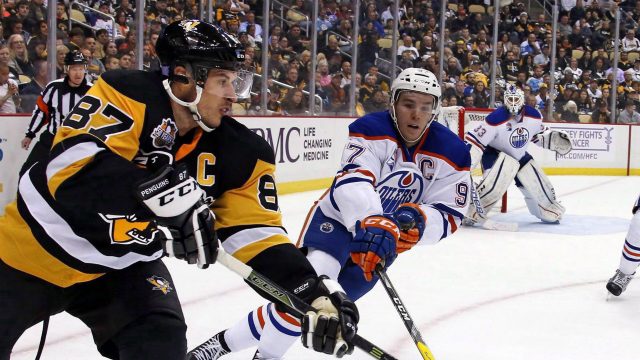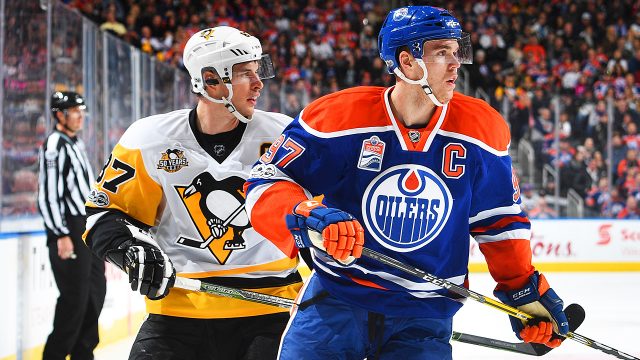
David Poile is in a position where we’re not too familiar seeing him.
In his 22nd season as general manager of the Nashville Predators, Poile will be a seller in the 2021 trade season. In recent times, he’s more often been on the other side of this divide. Poile’s Preds have qualified for the playoffs in 13 of the past 16 seasons. Their current streak of six post-seasons in a row has been the most successful period in franchise history.
The last time Poile would have been an in-season seller was in 2013 and 2014, when Nashville missed the playoffs in back-to-back years. At that time, he traded long-time Pred David Legwand for Calle Jarnkrok, Patrick Eaves and a third-rounder. He also acquired Filip Forsberg for Michael Latta and Martin Erat.
What he didn’t do was overhaul his team to the degree trade watchers are hopeful of this season. In those selling seasons he didn’t even trade a player as skilled or valuable as Mattias Ekholm, who is the top available player on the NHL trade market right now.
Poile has dealt on this scale before of course, but has more often approached a big trade as a way to improve — or just keep going — with the pillars he has. In January of 2016, Poile made an in-season deal to send Seth Jones to Columbus for Ryan Johansen due to the strength of the blue line and a need for a centre. In the off-season six months later, he sent Shea Weber to Montreal for P.K. Subban. Poile later traded Subban to shed his contract.
But this is different. The Preds aren’t just barely out of the playoff picture; they’re having a season so bad that the ugly word “rebuild” keeps popping up. Filip Forsberg is a long shot, but a possibility to go. Roman Josi, Ryan Ellis and Pekka Rinne are probably the only untouchables.
On top of their situation in the standings, the financial outlook is framing some choices. Matt Duchene and Ryan Johansen will combine for $16 million against the cap for the foreseeable future; over $15 million has already been committed to Josi and Ellis for the long term on the blue line; and then Forsberg and Ekholm will both be due healthy raises when they are UFA eligible after next season.
So while the team struggles and big money has already been committed to a few players, it makes sense for Poile to give his core a little shake and explore a package of futures. Not many defencemen of Ekholm’s on-ice calibre become available, especially in-season, and certainly not with such a team-friendly cap hit of $3.75 million through next season — a blessing in the flat cap world.
The type of return Nashville is reportedly trying to get for Ekholm is two prospects and a first-round pick — the same sort of return Los Angeles got for Jake Muzzin. What they’re ultimately able to get back in an Ekholm trade will be determined by factors including size of the trade market, motivation level of the buyers, their cap outlooks and more.
Here is a look at all the non-rental “top four” defencemen who’ve been traded since the Muzzin deal in 2019:
Jan. 28, 2019: LAK trades Jake Muzzin to TOR for Carl Grundstrom, Sean Durzi, 2019 first-rounder
Feb. 24, 2019: ANA trades Brandon Montour to BUF for Brendan Guhle, 2019 first-rounder
June 22, 2019: NSH trades P.K. Subban to NJD for Steven Santini, Jeremy Davies, 2019 and 2020 second-round picks
Feb. 19, 2020: LAK trades Alec Martinez to VGK for 2020 and 2021 second-round picks
Feb. 24 2020: NYR trades Brady Skjei to CAR for 2020 first-rounder
If the Muzzin return is the baseline here, then you wonder if Nashville might be able to even improve on that in good market conditions. Could they, say, corral a better prospect (like someone picked in a first-round) and a first-round pick? Ekholm would provide a huge boost to a top four from the left side and be a minutes leader on the penalty kill like no other attainable defenceman this season.
The Toronto Maple Leafs are one of the teams possibly connected to Ekholm, and they’re at an interesting spot in the schedule with just three games in 15 days. That screams trade window, but won’t necessarily accelerate Poile’s need to complete a trade. So, would the Leafs be inclined to make that sort of offer, or could their interest in getting something done in the next two weeks be enough to spur someone else to make the bid now?
To give you an idea of why it might not be crazy to suggest Ekholm could go for a higher price, here is how Muzzin and Ekholm compared in some key areas for the season-and-a-half before they were traded (or rumoured to be traded, in Ekholm’s case):

Comparable in many ways, but it’s the cap hit that perhaps drives Ekholm’s value a bit higher. Certainly in a normal season that would be true, but with the cap staying flat through the rest of Ekholm’s contract, that kind of value on top of the rarity of the trade asset could make Ekholm irresistible. Where Muzzin’s hit accounted for 5.59 per cent of the overall cap, Ekholm’s is just 4.6 per cent.
Adding cheap players through the draft comes with its own upside, especially these days. But when push comes to shove how many “contenders” will see the opportunity to get Ekholm at this cap hit for two runs as too good to pass up? Poile could see it as an opportunity to improve in the long term, while also getting something that could help sooner.
Ekholm is the best attainable defenceman this trade season, but rather than consider the Muzzin deal as the base line, maybe we should be wondering which teams should/would go above that.
What would you want your team giving up for a year and a half, at least, of Mattias Ekholm?






